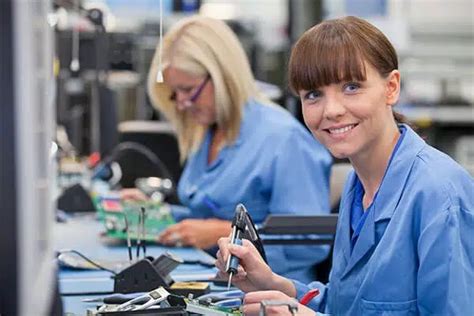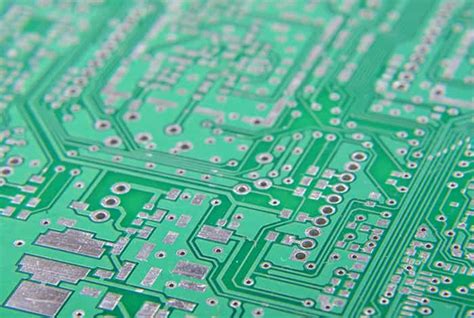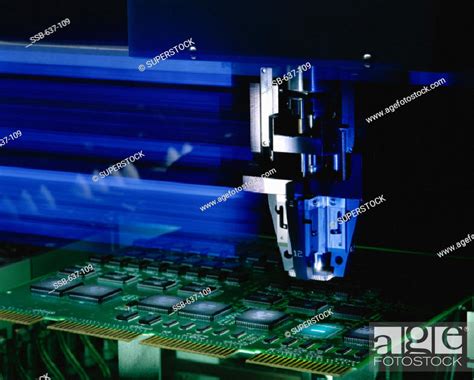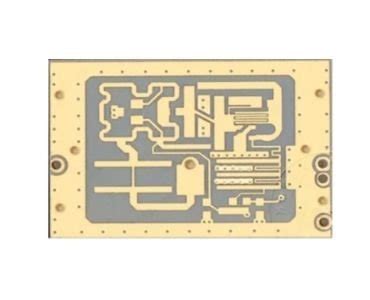Comprehensive Guide to PCB Assembly and Soldering Services

Key Takeaways
In the realm of PCB assembly and soldering services, it is crucial to understand the foundational elements that contribute to successful electronic manufacturing. A key takeaway is the importance of meticulous design and planning before initiating any PCBA project. Properly defined specifications can lead to improved efficiency throughout the assembly and soldering processes.
Moreover, investing in high-quality equipment tailored for PCB assembly, such as precision soldering irons and automatic pick-and-place machines, significantly impacts the overall quality of the final product. Different soldering techniques, such as wave soldering, reflow soldering, and hand soldering, each have their own unique advantages and are essential in diverse scenarios depending on component types and volume.
Additionally, quality control cannot be overstated. Implementing robust testing measures at various stages of production ensures that potential defects are identified early in the PCBA process, thereby minimizing costly rework or wastage.
The challenges faced during PCB assembly often require innovative solutions, and sharing knowledge about these common hurdles can pave the way for more effective problem-solving strategies among professionals in the field. As technology evolves, staying abreast of future trends in PCB manufacturing can prepare manufacturers for shifts in industry standards and efficiency gains.
| Key Aspect | Importance |
|---|---|
| Planning | Reduces errors |
| Equipment Quality | Enhances assembly precision |
| Soldering Techniques | Adaptability to various needs |
| Quality Control | Ensures product reliability |
By understanding these key facets of PCB assembly and soldering services, individuals at both beginner and experienced levels can contribute to achieving efficiency and quality within electronic manufacturing processes.

Introduction to PCB Assembly and Soldering Services
The world of PCB assembly and soldering services plays a pivotal role in the production of modern electronic devices. As technology continues to advance, the importance of effective PCBA (Printed Circuit Board Assembly) processes becomes increasingly clear. This intricate journey begins with the design phase, where engineers create layouts that will dictate how components connect and function. Once the design is finalized, it sets the stage for PCB assembly, where various electronic components are accurately placed onto the printed circuit boards. Employing the right techniques and tools during this phase is crucial for ensuring a robust and reliable final product.
Soldering is a key technique within this process, used to securely bond components to the PCB. Different soldering methods exist—ranging from manual soldering to automated reflow techniques—that cater to various production volumes and component types. The choice of method directly impacts both durability and performance. In addition, quality control measures are essential throughout assembly and soldering processes, helping identify defects that may undermine functionality.
Ultimately, embracing best practices in PCB assembly and soldering not only improves efficiency but also safeguards against potential failures down the line. By understanding these processes deeply, both novices and seasoned professionals can contribute significantly to high-quality electronic manufacturing that meets today’s rigorous standards.

Understanding the PCB Design Process
The PCB design process is a critical foundation for successful pcb assembly and ensures that the final product meets the required specifications and performance criteria. It begins with defining the requirements of the electronic device, including electrical functions, size constraints, and environmental conditions. After gathering these requirements, designers create a detailed schematic diagram, which demonstrates how all electronic components interact within the circuit. This stage is vital since it lays the groundwork for converting conceptual designs into actual hardware.
Following the schematic creation, designers utilize computer-aided design (CAD) software to develop a comprehensive layout of the printed circuit board (PCB). This step includes placing components on a virtual board according to their electrical connectivity while considering aesthetic aspects such as space and design efficiency. As part of this process, considerations for pcba must include factors like trace width and clearance to ensure adequate current handling and minimize interference.
Once the layout is established, it undergoes rigorous testing and verification to identify any design flaws before moving into production. Simulations can help assess different scenarios that might affect performance, thereby enhancing reliability. Ultimately, a well-executed PCB design not only streamlines pcb assembly but also significantly contributes to reducing manufacturing costs and time. By following these meticulous steps in the PCB design process, manufacturers can ensure they produce high-quality boards that meet both industry standards and consumer expectations.
Essential Equipment for PCB Assembly
In the realm of PCB assembly, having the right equipment is crucial to achieving a high-quality end product. At the core of any successful PCBA process are several key tools and machines that facilitate efficient assembly and soldering. Firstly, soldering stations play a vital role; they provide the necessary heat for joining components to the PCB and often come with features like temperature control to prevent damage to sensitive components.
Additionally, pick-and-place machines are essential for automatically positioning components onto the PCB before soldering. These machines enhance precision and speed, allowing for complex assemblies that would be challenging to achieve manually. Alongside these, reflow ovens ensure that solder is properly melted and cooled in a controlled manner, thus creating strong electrical connections.
Another important piece of equipment is the test fixtures, which are used post-assembly to verify that all connections are secure and functional. "A well-planned testing phase can save time and resources by catching errors early," suggests industry expert John Doe.
Furthermore, incorporating cleaning equipment helps maintain a contamination-free environment, crucial for ensuring high reliability in electronic devices. Properly maintained tools not only contribute to better quality but also enhance production efficiency.
In summary, investing in quality equipment not only enhances the efficiency of PCB assembly but also significantly impacts the overall performance of electronic assemblies, making it imperative for both beginners and seasoned professionals to familiarize themselves with these essential tools.
Overview of Soldering Techniques
Soldering is a critical process in pcb assembly that plays a significant role in creating reliable electrical connections between components on a printed circuit board. The most common technique used is through-hole soldering, where leads of components are inserted into holes on the PCB and soldered from the opposite side. This method offers excellent mechanical strength but may be more time-consuming compared to other techniques. Another popular method is surface mount soldering, which allows for a more compact design by placing components directly onto the surface of the PCB. This technique benefits from automated assembly processes, ultimately enhancing production efficiency.
In addition, reflow soldering is often employed in pcba processes, where a paste consisting of solder and flux is applied to the board before components are placed. Heat is then applied, causing the solder to melt and form connections as it cools. Furthermore, wave soldering is another approach mainly used for mass production of through-hole components, where the PCB passes over a wave of molten solder. Each of these techniques has its pros and cons, making it essential for manufacturers to choose methods that align with their specific production needs.
Incorporating advanced technologies like infrared or laser soldering offers increased precision and reduced heat exposure to sensitive components. Moreover, understanding the thermal management strategies during this process ensures both solder joint reliability and component longevity. By mastering these essential techniques, companies can continue to innovate in their pcba services while addressing challenges associated with quality control and efficiency.

Quality Control in PCB Assembly
Quality control in PCB assembly is a critical phase that ensures the reliability and performance of electronic devices. The PCB assembly process involves multiple stages where various components are soldered onto the printed circuit board. Each of these stages requires meticulous attention to detail to prevent defects that could lead to failures in the final product. Tools such as automated optical inspection (AOI) systems help assess the quality of PCBA by identifying misalignments, soldering errors, and other potential issues early in the process. Furthermore, implementing statistical process control (SPC) techniques throughout the production cycle allows manufacturers to monitor variations and maintain high standards. Regular quality audits and reviews of workmanship standards are equally essential, as they help reinforce best practices among technicians and ensure compliance with industry standards. By systematically addressing quality control measures, manufacturers can significantly enhance the efficiency and effectiveness of their PCB assembly processes, ultimately delivering superior products that meet customer expectations.
Common Challenges and Solutions in Soldering
Soldering is a critical component of PCB assembly, yet it comes with a set of challenges that can impact the performance and reliability of the final product. One common issue encountered during the soldering process is cold solder joints, which can arise from insufficient heat or movement during the operation. To mitigate this, employing the appropriate soldering techniques and ensuring consistent temperature control is paramount. Another challenge is insufficient solder, which may lead to poor electrical connections or weak mechanical bonds. This can often be resolved by using quality solder materials and ensuring adequate application techniques during pcba processes.
Additionally, contamination from flux residues or environmental pollutants can affect solder joint integrity. Using proper cleaning methods and residue management practices helps avert these issues. Furthermore, intricate designs may lead to difficulties in achieving uniform heating across all components, potentially causing thermal shock or damage to sensitive parts. Effective practices such as using pre-heating techniques or specialized soldering equipment can enhance heat distribution during pcb assembly.
Lastly, training operators to recognize and respond to these challenges forms a vital part of sustaining high-quality standards. By fostering skills in troubleshooting common soldering problems, manufacturers can enforce best practices that contribute significantly to the overall efficacy and reliability of their pcb assembly workflows. Adopting these solutions reinforces not only the quality of individual pcba units but also benefits long-term production efficiency and product performance.
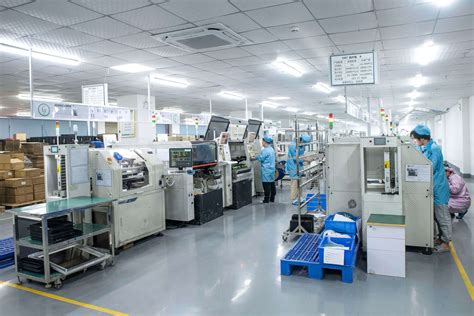
Best Practices for Efficient PCB Assembly
When engaging in pcb assembly and soldering, efficiency can dramatically enhance productivity and reduce costs. One of the fundamental best practices is to thoroughly understand the PCB design before commencing the assembly process. This enables teams to anticipate potential challenges and streamline workflows. Utilizing advanced PCBA tools, such as pick-and-place machines, can significantly speed up component placement, minimizing handling errors and improving placement accuracy.
Moreover, implementing a robust workflow that includes proper documentation of revisions and changes will ensure a smoother assembly process. Regularly training staff in modern soldering techniques and methods is also essential; staff proficiency directly influences the quality of the solder joints. Establishing a clean environment reduces contamination risks, while adopting a systematic approach to inventory management aids in avoiding component shortages or excesses.
Furthermore, conducting routine audits can help identify inefficiencies in the assembly line that might affect overall performance. Maintaining equipment in optimal condition not only prolongs machinery life but also ensures consistently high-quality output. Incorporating these best practices into the PCB assembly process promotes efficiency and enhances product reliability, ultimately leading to greater customer satisfaction. Overall, prioritizing these measures will create a solid foundation for successful pcb assembly operations.

Future Trends in PCB Manufacturing
As technology continues to evolve, PCB assembly and soldering services are also undergoing significant transformations. One of the most notable trends is the movement towards higher degrees of automation and the incorporation of Industry 4.0 principles. This shift is leading to improved efficiency and precision in PCBA processes, as automated machines can now perform complex tasks with minimal human intervention. Additionally, the integration of artificial intelligence and machine learning is enabling manufacturers to optimize production workflows, predict maintenance needs, and enhance quality control measures, ultimately resulting in more reliable PCB assembly outcomes.
Another trend gaining traction is the increasing demand for smaller, more compact electronic devices. This has sparked innovation in materials and techniques used in PCB assembly. Flexible PCBs are becoming more popular due to their versatility in design and potential cost savings. The use of high-density interconnect (HDI) technology allows for greater component density without sacrificing performance, catering to the trends toward miniaturization.
Sustainability is also making waves in the PCB manufacturing sector. Manufacturers are seeking environmentally friendly materials and processes that minimize waste and reduce harmful emissions during production. Companies that adopt green manufacturing practices not only enhance their brand reputation but also contribute positively to global environmental efforts.
Moreover, as consumer electronics continue to become more advanced, there is an increasing intersection between PCB assembly services and emerging technologies such as Internet of Things (IoT) devices and wearable technology. These advancements require manufacturers to adapt rapidly by upgrading their capabilities and adopting new standards for connectivity.
In summary, staying ahead in the competitive landscape of PCBA requires an ongoing commitment to innovation, efficiency, sustainability, and adaptability in response to emerging market demands.
Conclusion
In wrapping up our comprehensive guide to PCB assembly and soldering services, it is essential to recognize the pivotal role these processes play in the world of electronics. Successful pcba projects rely on a harmonious integration of design, equipment, and skilled execution. By understanding the fundamental principles of PCB assembly, including the different types of soldering techniques and the equipment necessary, professionals can optimize their production lines for efficiency and quality. Quality control measures should not be overlooked, as they serve to mitigate common challenges encountered during the soldering process. Adopting best practices ensures that each pcba meets high standards of reliability and functionality.
As technology continues to evolve, being aware of future trends in PCB manufacturing will empower engineers and manufacturers alike to stay ahead in a competitive market. By fostering a robust understanding of these elements—combined with ongoing education and adaptation—both newcomers and seasoned experts in this field can contribute to creating innovative electronic solutions that push the boundaries of modern technology.
FAQs
Q: What is PCB assembly?
A: PCB assembly refers to the process of assembling electronic components onto a printed circuit board (PCB). This is a crucial step in the manufacturing of electronic devices, ensuring all elements are securely attached and functioning correctly.
Q: What are the different types of PCB assembly services available?
A: There are several types of PCB assembly (PCBA) services, including surface mount technology (SMT), through-hole technology, and mixed technology. Each method has its unique advantages depending on the application requirements.
Q: How important is soldering in the PCB assembly process?
A: Soldering is essential as it creates a permanent electrical connection between components and the PCB. This process ensures that the assembled units perform reliably in their intended applications.
Q: Can I assemble PCBs myself?
A: Yes, you can assemble PCBs yourself if you have access to the correct equipment and skills. However, many companies prefer outsourcing pcb assembly to specialists to ensure quality and efficiency.
Q: What factors influence the cost of PCB assembly services?
A: The cost of PCBA services can be influenced by several factors, including component complexity, quantity of boards being assembled, type of materials used, and labor costs.
Q: How do I choose a reliable PCB assembly service provider?
A: Look for providers with good reviews, certifications, experience in your industry, and visible case studies. Reliable providers can help guide you through PCB assembly, ensuring high-quality output.

